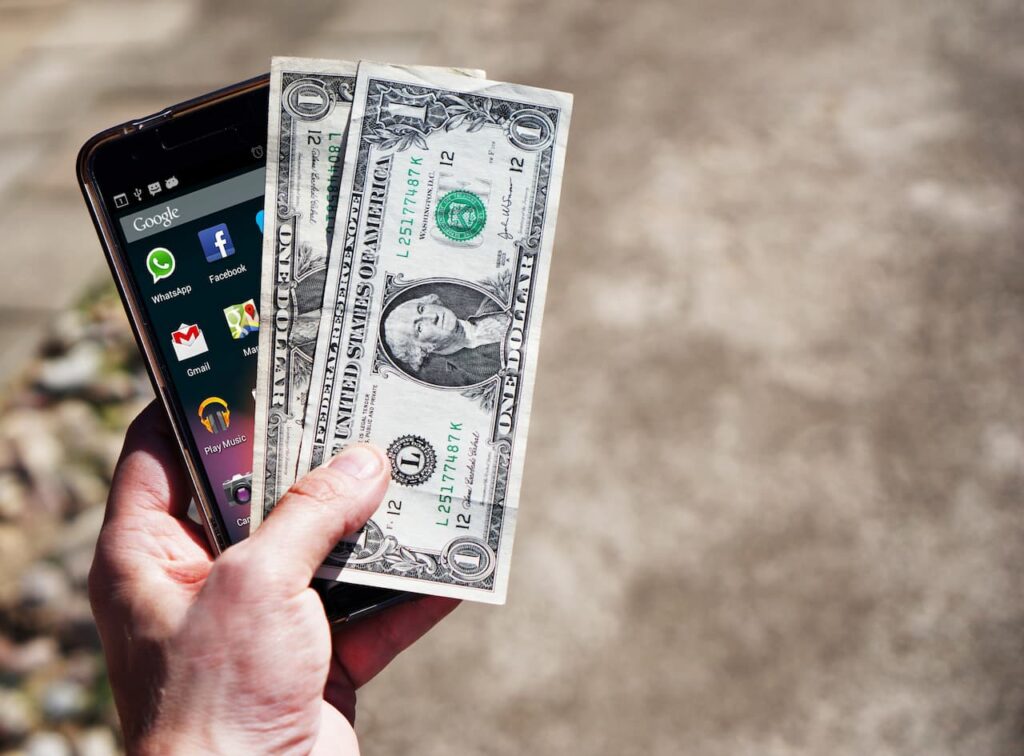


The App Store and Google Play offer more than 5.7 million mobile applications. However, only a small percentage of applications really bring in millions of dollars, although all of them might have the capacity to do so.
If you are thinking of developing an app as a means of generating revenue, there are a lot of different factors that you need to take into consideration. But remember that if money is your primary motivation, you may want to rethink your plans.
Your choice of platform may have a big impact on the earnings you can potentially make due to variances in market share, purchasing power, and the general popularity of the platform. Statcounter estimates that iOS has a market share of around 27 percent, whereas Android has an almost 73 percent share of the market. However, if you consider each area on its own, you’ll see a dramatic change in the overall picture.
It is crucial to evaluate the monetization model you will use for the application after selecting the platforms on which the app will run. As a result, because there are already millions of applications, you don’t have to design anything new when the most effective monetization models are already known and tested.
In order to have a better understanding of the revenue models that are used most often, let’s begin by categorizing all of the models into the following three categories:
Free apps: The applications in this category do not include any in-app purchases or other forms of paid content. Apps available without charge may be downloaded and used without a fee.
Partially free apps (Freemium): At the moment, this particular method of making money is the one that is used the most. Freemium applications are available for download without cost, but they have feature limits. The user will be required to pay to unlock all of the app’s functionality and enjoy using it to its full potential.
Paid apps: Downloading a paid app often requires money unless the app is offered for a limited time for free during a trial period. However, after the free trial time is complete, the user will be required to pay to keep using the application.

During the COVID-19 pandemic, home quarantine measures were used to slow down the disease’s progression and limit its spread. People were forced to stay inside their homes, where their smartphones served as the only means of communication with the outside world. In addition, we anticipate that mobile will dominate an even larger portion of our lives during the next several years. The total amount of time spent in the primary “at-home” app categories is expected to exceed 1.3 trillion hours on Android smartphones alone in 2021.
The international market for mobile games is expanding at a fast rate. It already accounts for 72 percent of all money spent in app stores. The total amount of money consumers spend in the gaming industry hit $120 billion in 2021.
The number of people who use dating apps to find a partner will continue to grow in popularity over the next several years. In terms of money, in 2020, customers spent over $3 billion on online dating, with 560 million dating app downloads.
Streaming services are becoming more popular as an alternative to cable television among consumers looking to satisfy their entertainment needs. The success of these applications can be linked to the more direct and individualized distribution. In 2021, consumers in the United States had an average of 9.5 video streaming apps loaded on their smartphones, which is an increase of 85 percent from 2019. Consumers are looking for more content alternatives due to the COVID-19 epidemic.
In the middle of lockdowns caused by COVID-19, at-home fitness applications broke new records for the amount of money spent by consumers and achieved extraordinary revenue growth in 2020. For instance, Peloton’s worldwide revenue increased from just under 734 million US dollars in 2019 to over 1.46 billion US dollars in 2020, almost doubling the previous year’s figure. The trend toward consumers changing their mobile habits and businesses adopting long-term plans for remote work is likely to continue driving growth in the home fitness industry through 2021. According to research published by Reports and Data, the worldwide market for fitness apps is projected to reach $14.64 billion by the year 2027.
Several additional app categories can generate significant revenue even on a lesser scale. For instance, educational applications can provide you with a profitable industry and the opportunity to have a constructive effect on people’s lives.
The question “How much money can apps make?” may not have a definitive answer. However, the data on the income generated by various applications can help give you a broad knowledge of the topic. Games and entertainment apps, for instance, have the potential to rake in billions of dollars. However, there is also a substantial profit potential in less complex applications and in smart devices.
Orangesoft’s primary objective is to facilitate the expansion of clients’ businesses via the development of cutting-edge mobile applications. Get in touch with us for a free consultation if you are at a loss as to how you can design a mobile app that is both functional and cost-efficient.